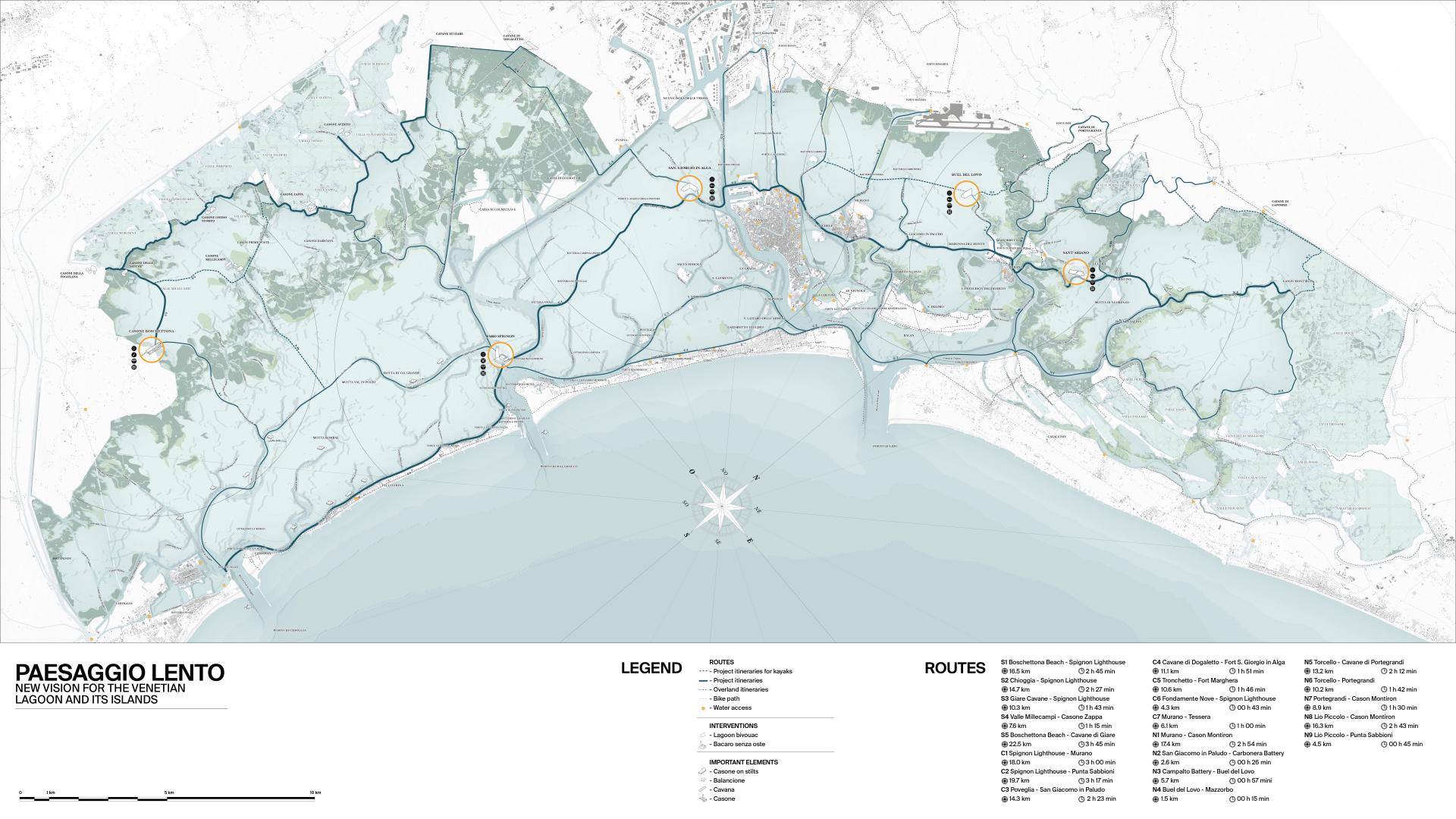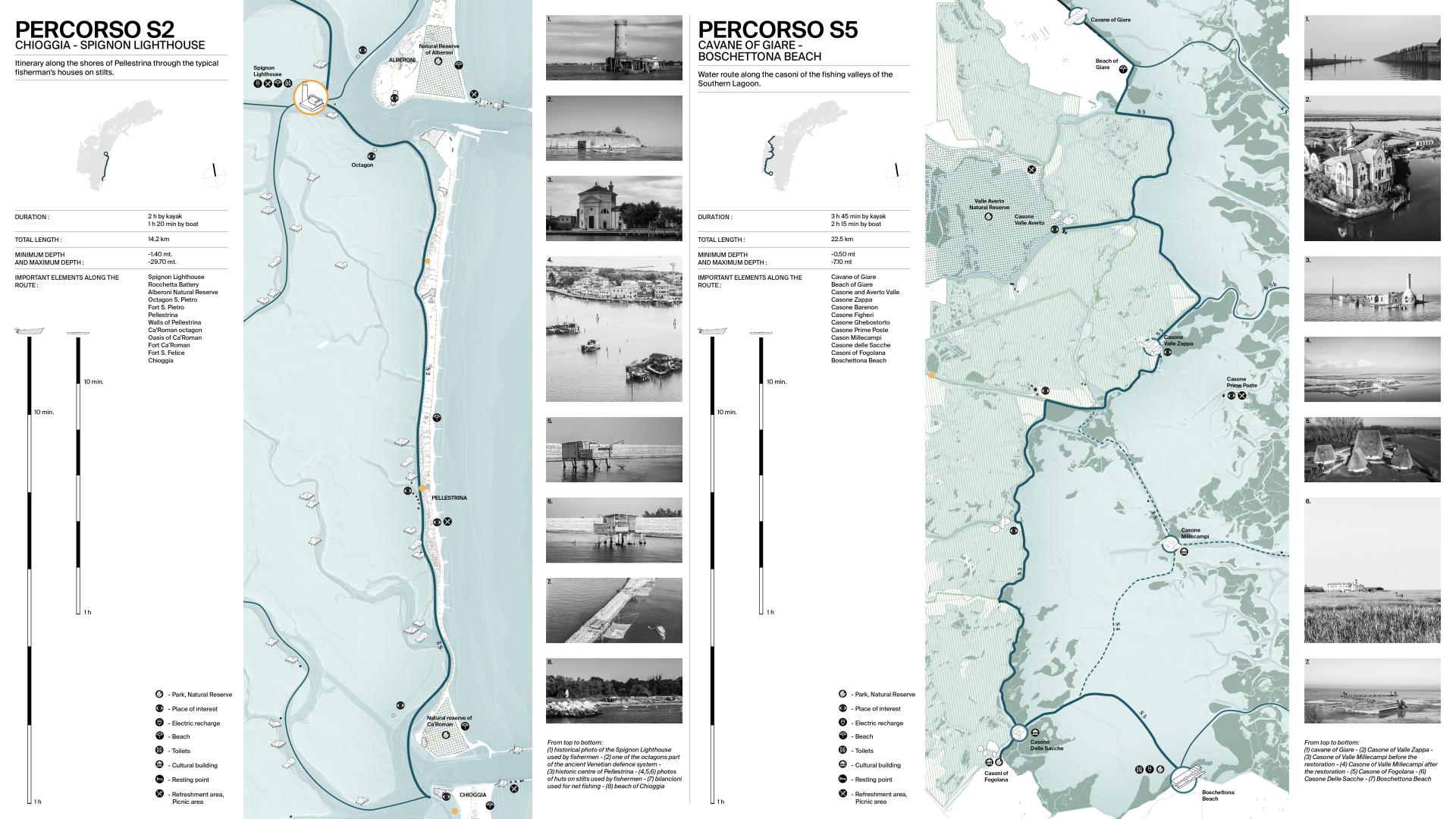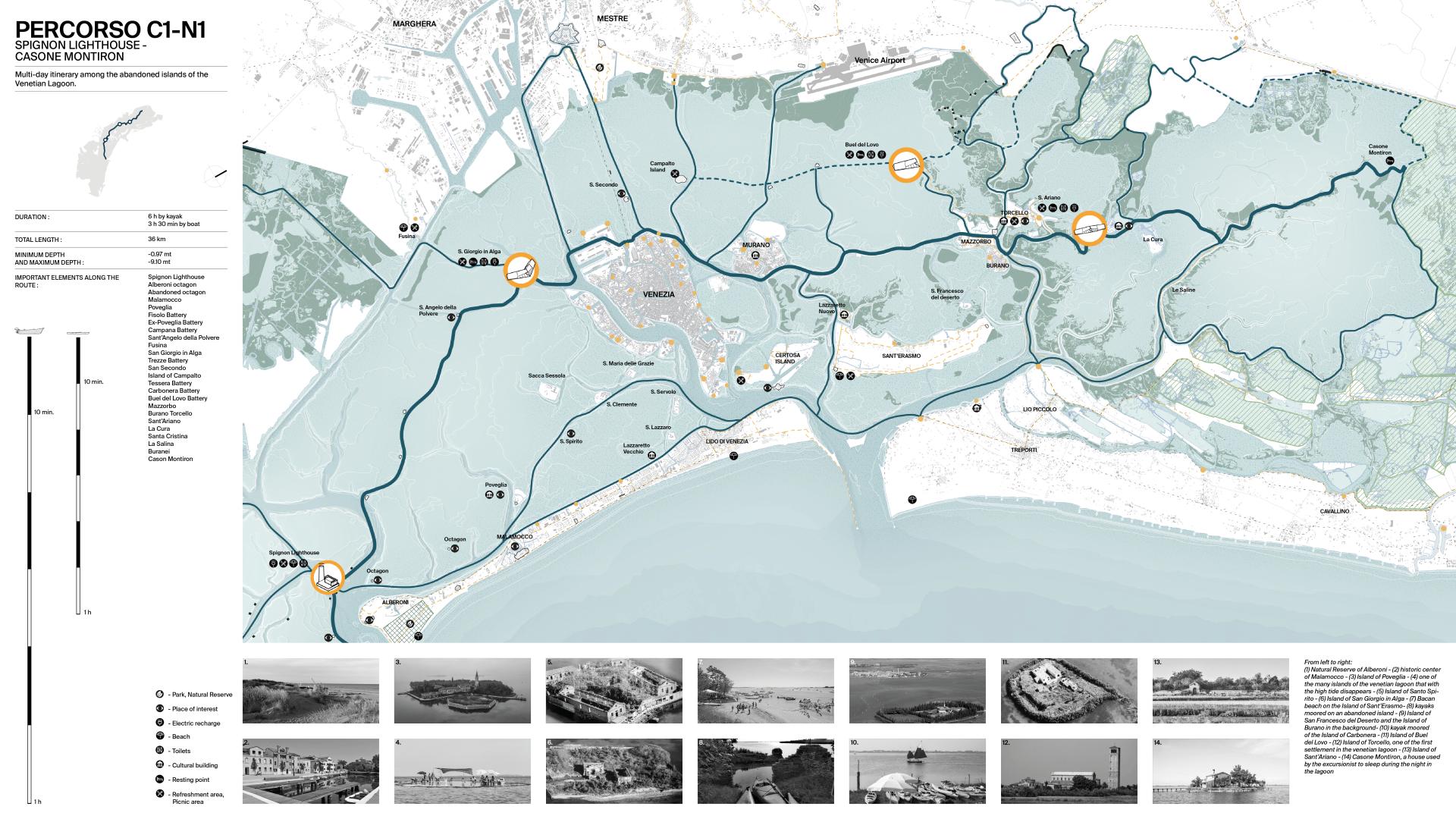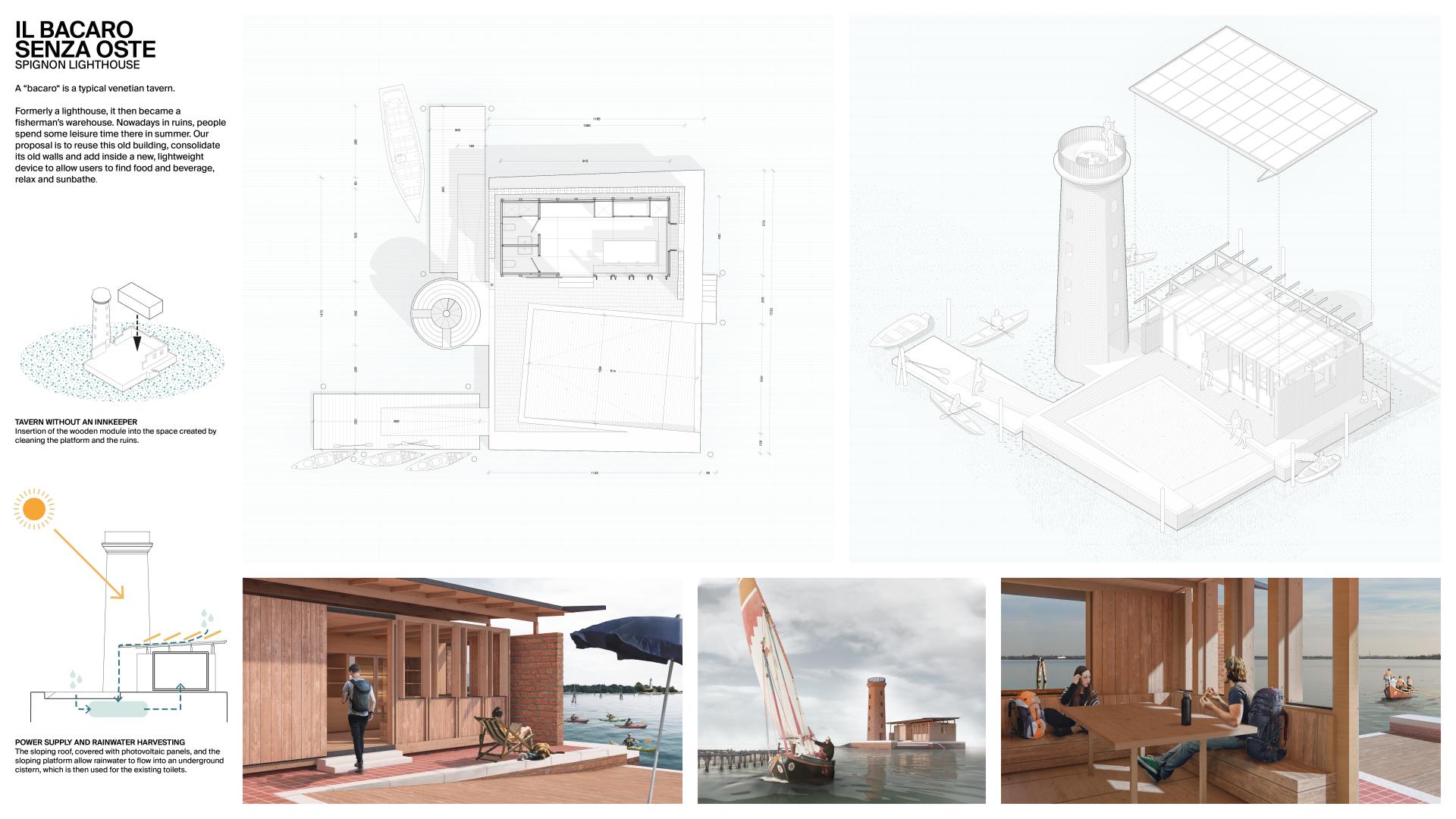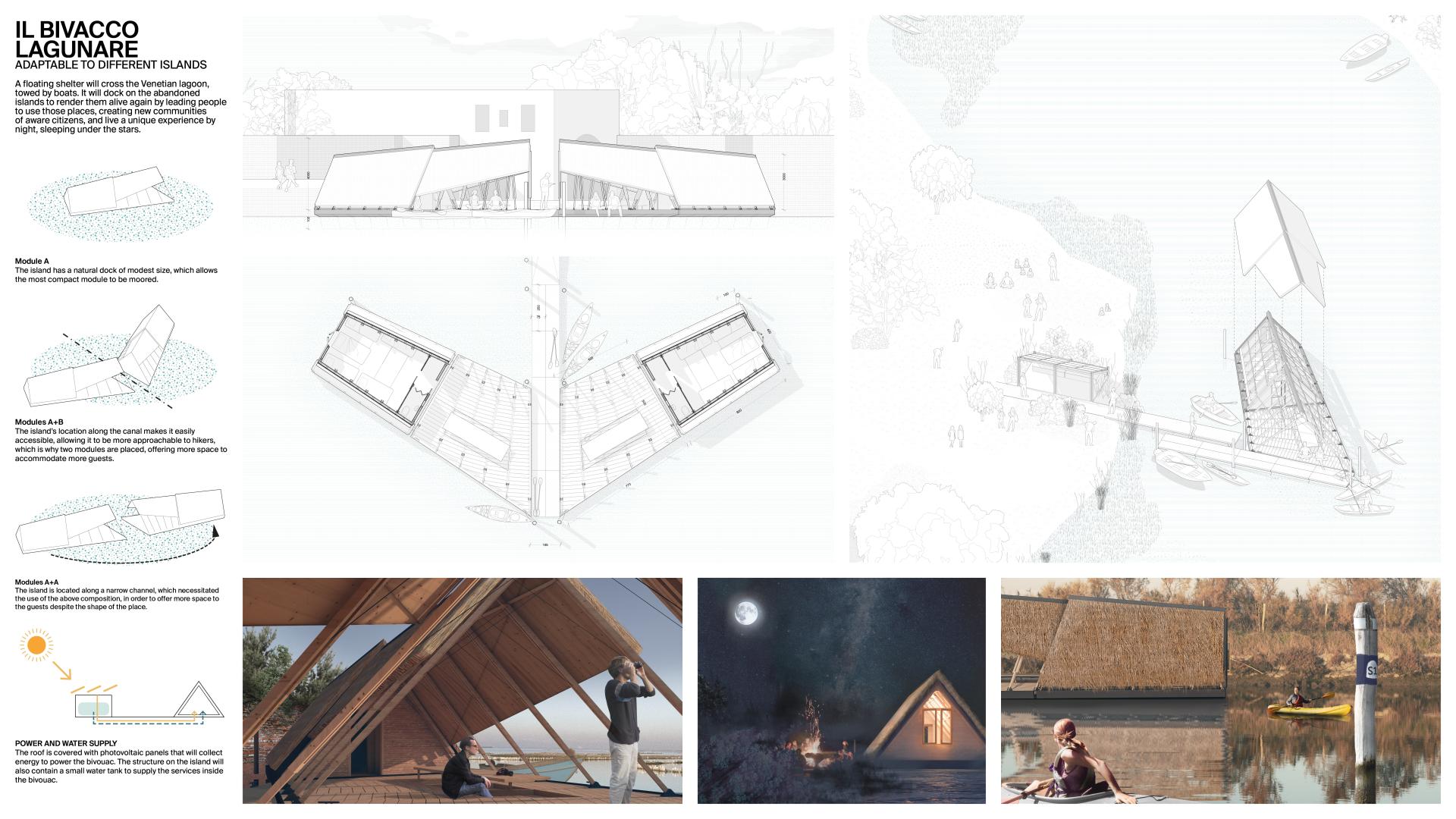Paesaggio Lento (Slow Landscape)
Basic information
Project Title
Full project title
Category
Project Description
Venice and its lagoon are a world heritage site and are well known all over the world for their beauty. Yet, outside the most famous islands, there is an archipelago of forgotten places that have participated in the history of the city. Today these islands are abandoned and suffer from neglect, rubbish and in some cases building speculation. The aim of this project is to recover this heritage, to return it to the population and to create a new, more conscious kind of tourism.
Geographical Scope
Project Region
Urban or rural issues
Physical or other transformations
EU Programme or fund
Which funds
Description of the project
Summary
This work is based on the premise that the historic centre of Venice is subject to an unsustainable form of tourism. This is leading the city to become increasingly isolated, to the point of forgetting the unique lagoon context in which it is located.
Analysing the various levels constituting the Lagoon, we realised that this place is composed of a large number of abandoned islands and artefacts. These islands are nonetheless rich in history and charm, and losing them would cause a large part of this area's past to disappear forever. We identified here an enormous untapped potential to unveil. The possibility of offering a new narrative to these places is what this project aims to achieve.
The inventory of the different types of elements detected during the study highlights the heterogeneity of the components of the lagoon landscape.
The analysis of the lagoon highlighted a great heterogeneity between its components. The desire to enhance these elements has led to the drafting of a map of naturalistic itineraries on the water, which allows hikers equipped with boats to move along the routes and discover qualities that may be unknown to the public.
Within the proposed network of itineraries, strategic points have been selected where concrete action can be taken through the construction of architectural structures to support the hikers' experience. These structures will be set up in different landscapes: this will include floating solutions, recovered ruined buildings and the construction of new structures in marginalised places.
Key objectives for sustainability
The project promotes a new idea of circular economy and sustainability. Users can approach the Venetian lagoon with non-polluting means such as: canoes, kayak and electric boats, helping to decrease water contamination and allowing the lagoon biotope to breathe again.
This new concept of resilient tourism proposes a better alternative to frenetic flows of millions of hit and run visitors in Venice. It offers new ways to visit the city and its characteristic and singular landscape. This idea is that, only by slowing down the movement can you really appreciate it.
“Paesaggio lento” (Slow landscape) provides new zero impact architectural devices, based on renewable energy (as photovoltaic panels), to allow a user-friendly stay.
The floating shelter will cross the Venetian lagoon, towed by boats. It will dock on the abandoned islands to render them alive again by leading people to use those places, creating new communities of aware citizens, and live a unique experience by night, sleeping under the stars.
During the day, tourists and citizens can spend time on the island or move to the “Bacaro (Venetian tavern)” in Spignon, a small platform in the middle of the lagoon. Formerly a lighthouse, it then became a fisherman's warehouse. Nowadays in ruins, people spend some leisure time there in summer. Our proposal is to reuse this old building, consolidate its old walls and add inside a new, lightweight device to allow users to find food and beverage, relax and sunbathe.
Key objectives for aesthetics and quality
The project is developed following two different strategies, depending on the context it will have to deal with.
The first relates to the water space. Its function will be to offer places to rest and support for walkers in the lagoon. It consists in a module made up of two parts: a rest area sheltered from the outside, and a covered area where you can eat or simply rest while reading a book. This module consists of a metal hull and a double-pitch roof made of wood and marsh cane, a typical material of the lagoon ecosystem, cheap and historically used by the lagoon inhabitants for its ability to insulate structures thermally and from water.
This module can be used in different configurations, coupled with another one or individually, allowing the structure to adapt to the island it will support.
The second strategy, on the other hand, will be based on the islands: we plan to rehabilitate the ruined buildings with small-scale restoration work and placing a wooden box inside them. This addition, made using dry technologies, will offer support to hikers by providing information on the water routes. Furthermore, typical products from the lagoon will be sold there from special vending machines. This will allow them to function without the need for on-site personnel.
The two different strategies take up the aesthetic characteristics of the fishermen's “casoni'', typical of the area of Pellestrina, and the hunters' hideouts located on the surface of the lagoon, reinterpreting them in a contemporary way.
Key objectives for inclusion
The recovery of these islands will allow the development of a new form of tourism, different from the one that has been besieging and economically corroding the city of Venice for years, infested with tourist shops that are replacing the typical ones of the city. The new form of tourism we want to promote is made up of aware people who love the environment and want to protect it because they are aware of its uniqueness. Those are people who want to get to know the real soul of the place, and not the one sold by the fake Murano glass shops, and for this reason they are looking for typical products, culture and experiences that cannot be offered in other places.
In our opinion, This will allow the population of the smaller islands to finally benefit from the tourism while also promoting the history of their places and their products.
The population itself will be involved in the maintenance of the structures and will help to choose the places where the structures will be located given their in-depth knowledge of this landscape. Moreover, these artefacts are made using typical local materials, techniques and knowledge, as they draw on the culture of the lagoon, thus allowing for easier and cheaper maintenance.
Physical or other transformations
Innovative character
In our project, the three dimensions - sustainability, experientiality and inclusiveness - cooperate towards the ultimate aim of the project: provide open and free facilities, managed by the local population, that favour the creation of unique experiences in the landscape of the lagoon. Thus, supporting the creation of new positive dynamics in those forgotten areas.
The possibility of experiencing the lagoon in curious and public new ways will also get people interested in those traditions and cultures at risk of being lost forever. An example of this is the traditional Venetian rowing technique: Hikers will move through the various bivouacs using rowing harnesses. This green means of transport will help preserve the ecosystem, and raise tourists awareness on the protection of the lagoon.
This is only one example of how the three dimensions work together.This association allow the project to work on different fronts: raising awareness among hikers about the fragility of the lagoon landscape; providing unique experiences through the use of bivouacs and inns without a host; generating new dynamics that include the local population and its traditions in the new flows of hikers that will be generated

